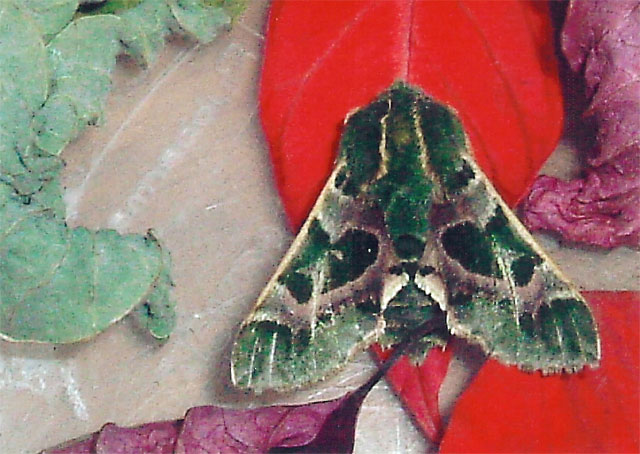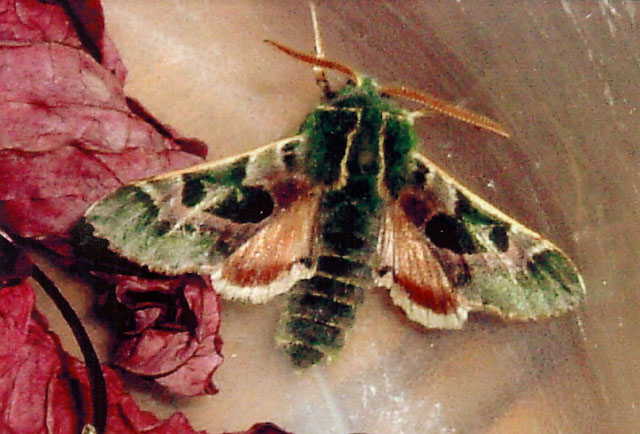Klamath County
Sphingidae
Arctonotus lucidus, Klamath Falls, Oregon, March 13, 2007, courtesy of Ruth Ann Patton.

Arctonotus lucidus, Klamath Falls, Oregon, March 13, 2007, courtesy of Ruth Ann Patton.
It is hoped that this checklist, with the thumbnails and notes, will help you quickly identify the moths you have encountered.
This page is dedicated to Ruth Ann Patton who sent me the images of Arctonotus lucidus at the top and bottom of this page. Ruth Ann writes (March 15, 2007), "We have had three of these moths show up at our home in Klamath Falls, Oregon, the past few days. We had never seen one of these at our place and have lived here over 30 years. The newspaper here finally was able to identify the species and so, when I checked your internet page, I also found the exact one. I would like to send you my photos, they are enlarged and taken with my innexpensive digital camera but very colorful. Thank you for your internet information, now I will know where to look."
A WO" after the species name indicates that I have no confirmed reports of this species in Klamath County, but I (William Oehlke) expect that this moth is present.
Please help me develop this list with improved, documented accuracy by sending sightings (species, date, location), preferably with an image, via email to Bill Oehlke.
Sphinginae subfamily
Smerinthini Tribe:
Macroglossinae subfamilyDilophonotini Tribe:
Macroglossini Tribe:
|
This page is brought to you by Bill Oehlke and the WLSS. Pages are on space rented from Bizland. If you would like to become a "Patron of the Sphingidae Site", contact Bill.
Please send sightings/images to Bill. I will do my best to respond to requests for identification help.

Arctonotus lucidus, Klamath Falls, Oregon, March 13, 2007, courtesy of Ruth Ann Patton.